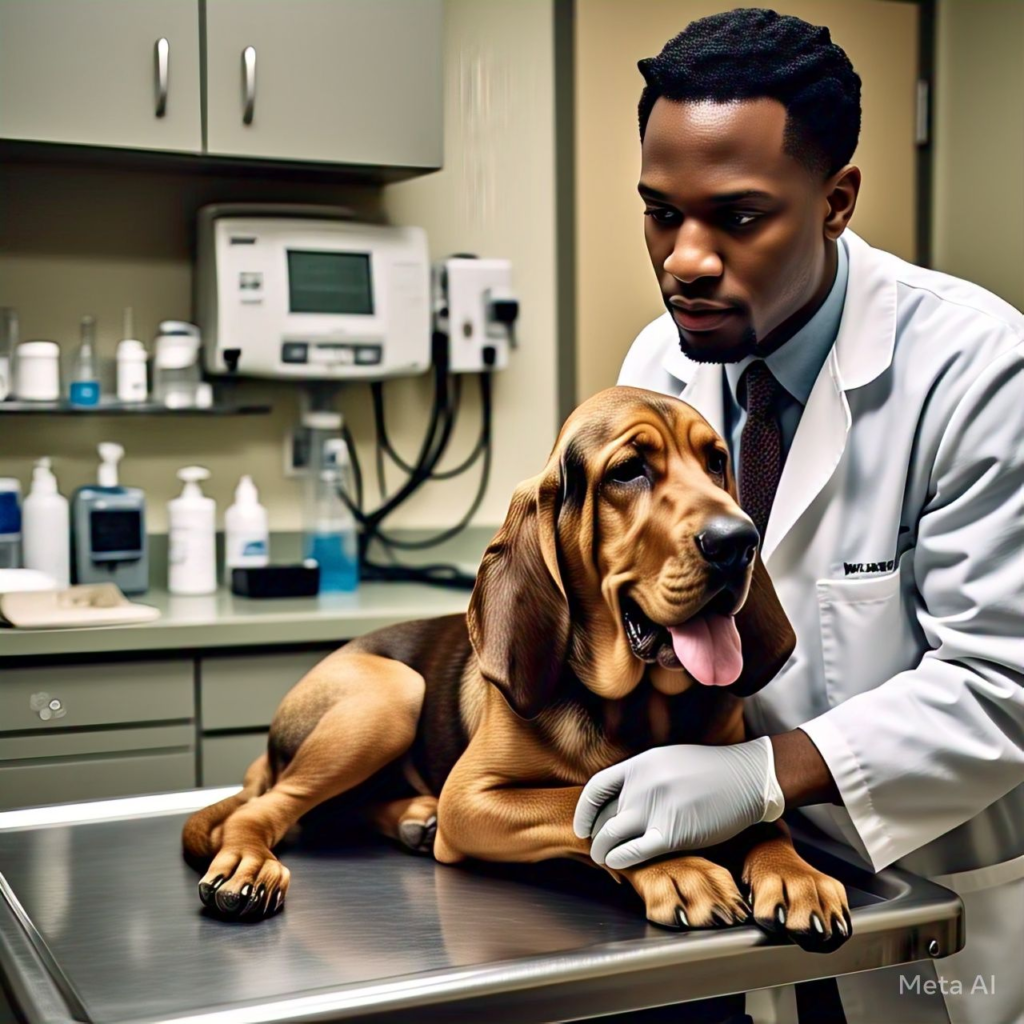Bloodhound Dog Breed Information
Introduction The Bloodhound dog breed is renowned for its extraordinary sense of smell, unmatched tracking ability, and gentle demeanor. Originally bred for hunting deer and wild boar, Bloodhounds are now widely used in search-and-rescue missions across the globe. If you’re searching for reliable and comprehensive bloodhound dog breed information, you’ve come to the right place. In this guide, we’ll explore the breed’s origin, characteristics, training needs, health care, grooming, and more.

Origin and History of the Bloodhound The Bloodhound’s ancestry dates back to medieval France, where they were known as “St. Hubert Hounds.” They were later brought to England and refined into the modern Bloodhound we recognize today. These dogs were initially bred by monks and later used by nobility for hunting.
Key Facts:
- Origin: France (St. Hubert Monastery)
- Development: Refined in England
- Primary Use: Tracking and scent work

Bloodhound | Origins, History, Scenting Ability
Physical Characteristics of the Bloodhound Bloodhounds are large, powerful, and dignified dogs. Their long ears and loose skin help trap scent particles, aiding in tracking.
Quick Specs:
- Weight: 80–110 pounds
- Height: 23–27 inches at the shoulder
- Coat: Short, dense, and weather-resistant
- Colors: Black and tan, liver and tan, or red

Temperament and Personality Bloodhounds are affectionate, gentle, and patient dogs. They are great with children and can coexist well with other pets. However, their strong prey drive and tracking instincts mean they often follow scents obsessively.
Personality Traits:
- Friendly and loving
- Independent thinker
- Persistent and determined

Setters Unleashed: Why These Dogs Are Loved by Hunters and Families Alike
Training and Exercise Needs Bloodhounds are intelligent but can be stubborn. Positive reinforcement training is key. Early socialization is vital to ensure a well-rounded dog.
Training Tips:
- Use treats and praise
- Be consistent and patient
- Engage their mind with scent games
Exercise Needs:
- 60–90 minutes of daily physical activity
- Activities like tracking, long walks, and nose work
Health Issues and Lifespan Bloodhounds are generally healthy but can suffer from certain breed-specific issues. Regular vet visits and preventive care can help manage these conditions.
Common Health Concerns:
- Hip and elbow dysplasia
- Bloat (gastric torsion)
- Ear infections
- Eye issues
Lifespan:
- Typically 10–12 years

Grooming and Maintenance Despite their short coats, Bloodhounds require moderate grooming. Their long ears and wrinkles need regular cleaning to avoid infections.
Grooming Checklist:
- Weekly brushing
- Regular ear cleaning
- Bathing every 6–8 weeks
- Nail trimming and dental care
Image Prompt: Owner brushing a Bloodhound’s coat with grooming tools beside them.
Is a Bloodhound Right for You? Bloodhounds are best suited for experienced dog owners who can meet their exercise and training needs. They thrive in homes with large yards and enjoy being part of a family.
Pros:
- Excellent scent-tracking ability
- Loyal and loving
- Good with families
Cons:
- Requires extensive training and exercise
- Can be vocal
- Prone to health issues if not cared for properly
Conclusion Understanding the Bloodhound dog breed information is essential for anyone considering adding this amazing breed to their family. Their legendary tracking skills, kind nature, and unique appearance make them a fascinating and loyal companion. With proper care, training, and love, a Bloodhound can be a treasured member of your household for many years to come.